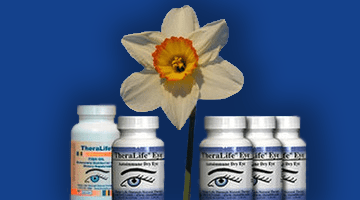The National Arthritis Data Work group reported 400,000 patients with autoimmune disease. In managing the patients of Sjögren’s, an integrated multi-discipline approach is essential.
What is Sjögren’s Syndrome?
Sjogren’s syndrome is an autoimmune disease that mainly affects the eyes and salivary glands (dry mouth), but can also affect other parts of the body
Sjögren’s syndrome is a genetic disorder that causes your immune systems to malfunction and attack healthy cells without invading bacteria and viruses.
White blood cells attack glands that produce moisture. In such situations they can’t create tears or saliva which causes your eyes to dry up or you lose elasticity.
Fortunately, some treatment can be helpful.
Often people are nervous about getting an illness that requires regular medical care. Remember that many sjögren’s patients are very healthy and have no major health problems.
The condition often accompanies other immune system disorders, such as rheumatoid arthritis and lupus
Sjögren syndrome
Sjögren’s syndrome is an infectious chronic inflammatory disorder which causes dry eye sensitivity.
A disease that causes the immune system to attack healthy cells causes inflammatory changes within the body and can destroy tissue if not treated.
When Sjögren’s syndrome strikes the immune cells, the lymphocyte cells attack the normal cells of exocrine cells, the gland which produces moisture in eyes and mouths.
The effect damages the gland causing them to lose moisture which leads to dryness and damage. Sjögren’s Syndrome can affect anywhere between 4 and 1 million Americans.
Sjögren’s syndrome causes and risk factors
Doctors have no idea what causes sjögren’s symptoms.
It is possible that your gene could be causing your health problems to occur.
Infecting a person’s immune system can set a pathogen in motion.
Your immune cells respond.
White blood cells fight against germinating organisms.
A defect in the human genus causes white blood cell damage in a gland producing saliva and tears.
It doesn’t take much to fight but it will continue without treatment.
Other reasons that can increase the likelihood of sjögren’s include age and gender.
In Sjogren’s syndrome, your immune system first targets the glands that make tears and saliva. But it can also damage other parts of your body, such as: Joints Thyroid Kidneys Liver Lungs Skin Nerves.
Sjögren’s syndrome symptoms
Sjögren’s symptoms vary widely.
The symptoms of Sjögren’s syndrome include: dry eyes, dry mouth dry skin tiredness vaginal dryness muscle or joint pain swelling between the jaw and ears (swollen salivary glands) rashes (especially after being in the sun).
The most commonly encountered symptoms include dry lips, dry eyes and dry throat.
The more common symptoms of Sjogren’s syndrome include: dry eyes (irritation, feeling gritty or itchy, burning) dry mouth (or difficulty chewing or swallowing).
Dry mouth. Your mouth might feel like it’s full of cotton, making it difficult to swallow or speak.
Some people with Sjogren’s syndrome also have one or more of the following:
- Joint pain,
- Swelling and stiffness Swollen salivary glands — particularly the set located behind your jaw and in front of your ear,
- Skin rashes or dry skin
- Vaginal dryness
- Persistent dry cough Prolonged fatigue.
Sjögren’s Syndrome. Complications
Because your teeth are not covered by saliva, it is possible that you get more cavities than others.
You may even suffer gum inflammation known as gingivitis or yeast infections. Sometimes that can cause trouble.
Dryness of the nose may cause nasal irritation, such as bruising, and sinus infections.
Dry eyes are a common source of infection and can damage the cornea. It can be a little difficult for you to see clearly in the eye.
Other minor health problems associated with sjögren’s include: diarrhea and indigestion; interstitial cystitis.
Sjögren’s syndrome diagnosis
Because most patients with sjögren’s have an autoimmune illness which can often appear like some other diseases such as fatigue syndrome or fibromyalgesia the symptoms are very severe.
Tell the Doctor about your eyes and skin condition.
- Do you have bad teeth molars?
- Do my lips start drying up?
- Do you lick the lip?
- Are joints prone to pain?
Your doctor might suggest blood testing. You can take blood out of your vein and put the blood into a laboratory for examination.
Diagnosis
Despite the symptoms and signs of sjögren’s syndrome are difficult to diagnose and are also common in older people.
Side effects on many drugs mimic the symptoms of Sjogren syndrome.
Testing helps rule out other diseases or helps identify an underlying cause for Sjogrens syndrome.
Blood tests
Your doctor might order blood tests to check for:
- Levels of different types of blood cells Presence of antibodies common in Sjogren’s syndrome. Evidence of inflammatory conditions
- Indications of problems with your liver and kidneys.
- Eye tests Your doctor can measure the dryness of your eyes with a test strip.
The GP can check for some of the more common causes, such as swelling of the eyelids (blepharitis) , diabetes or side effects from medicine.
If needed, they can refer you to a specialist for further tests, such as: blood tests an eye examination a lip biopsy – where a tiny piece of tissue from inside your lip is removed and examined under a microscope
Tests for Sjogren’s syndrome
Tests may include: Schirmer’s test – special blotting paper held to the eye is used to assess the degree of tear production eye examination – including the use of special dyes biopsy – a small piece of salivary gland tissue is removed (usually from the lip) and examined under a microscope blood tests – may be used to check the levels of particular immune system cells in the blood, and to check for any problems with your kidneys or liver.
Sometimes, people with Sjögren’s syndrome also have other autoimmune conditions, such as rheumatoid arthritis or lupus . This is known as secondary Sjögren’s syndrome. Primary Sjögren’s syndrome is where you do not have any other related conditions.
Sjögren’s Syndrome Treatment
It is important that you continue to take medical treatment for all symptoms of the condition.
Some of these can be purchased from pharmacies without a prescription, although the doctor may need stronger prescriptions if they are not working well enough.
Eye drops
Using drops such as artificial tears can prevent dry eye. They must be used daily.
Alternatively, there is a gel you apply to your eyes during the night. It has a strong adhesive on your eye surface so no more drops needed.
If your eyes are dry, you can get a reassurance prescription for your eyes – this includes Cequa Lacrisert or Restasis.
Eye drops, such as cyclosporin drops, may be prescribed by an eye specialist. Medicines and procedures If self-help measures and eye drops are not helping, your doctor may recommend: a medicine called pilocarpine – tablets that help the body produce more tears and saliva.
Punctal Plugs
A procedure to block the tear ducts with tiny man-made plugs to stop tears draining away – this can help keep your eyes covered with a layer of tears, so they do not feel as dry
Surgery
A minor procedure to seal the tear ducts that drain tears from your eyes (punctal occlusion) might help relieve your dry eyes. Collagen or silicone plugs are inserted into the ducts to help preserve your tears.
Treatment for Sjögren’s syndrome
Some people need prescription medications, or even surgical procedures.
Sjögren’s syndrome can be treated depending on a person’s body.
The symptoms associated by this disease are often reduced using eye drops or drinking water a lot frequently.
Occasionally, a person may have surgery or prescription medication.
Treatments for dry mouth
Things you can do If you have a dry mouth, it can help to: practise good oral hygiene, including brushing your teeth with a fluoride toothpaste twice a day avoid sugary food and drinks, and avoid snacking between meals use antibacterial mouthwash drink plenty of water regularly chew sugar-free.
Medications
These prescription medications slow the immune system’s response. They lessen inflammation and prevent organ damage.
Steroids: Prednisone prescription pills soothe inflammation of the joints, skin and organs. Antifungals: These medications treat yeast overgrowth in your mouth (oral thrush) or in your vagina (vaginal yeast)
Nonsteroidal anti inflammatory drugs
Treat systemwide symptoms. Hydroxychloroquine (Plaquenil), a drug designed to treat malaria, is often helpful in treating Sjogren’s syndrome. Drugs that suppress the immune system, such as methotrexate (Trexall), also might be prescribed.
Sjögren’s syndrome. Home remedies
There is plenty of advice on treating your symptoms alone.
If you are unable to drink sour water: Drink regularly. Chew gum or drink candy to help stimulate the blood circulation. Make sure they are not sugary to avoid cavities.
Apply saliva gel or spray before bed.
Ask your dentist for mouthwash and other sprays to reduce dryness.
You may have tried several products until you found one that suits your lifestyle and needs.
Continue brushing your teeth to prevent cavities. Make regular visits to the dentists.
Using an air conditioner and vaporizer during the night is recommended.
Avoid strong soaps that may dry out your skin.
Try to increase the humidity in your home.
Exercise regularly, eat a healthy diet, stop smoking and reduce stress to help your overall health and wellbeing.
Eat soft, moist foods if you have trouble swallowing.
Eat smaller, more frequent meals to stimulate saliva flow.
Use warm (not hot) water when taking a shower or bath.
Chew sugarless gum to stimulate saliva.
Avoid salty, acidic or spicy foods and carbonated drinks that may be painful if your mouth is dry.
Practice good dental hygiene and visit your dentist often.
Sjogren’s Treatment with TheraLife
All natural, oral treatment for dry eyes and joint pain.
Lifestyle and home remedies
Some sjögren’s syndrome symptoms are a positive response to self-help.
The treatment will improve blepharitis and glaucoma.
Artificial tears and eye lubricants can help relieve dry eyes.
It is possible to remove thick lubricants from eyes without the need for tears. A thinner consistency may cause blurry vision to collect on your eyelashes, which makes it difficult to use eye lubricants overnight.
Your doctor may suggest artificial tears without preservatives, which irritate eyelids and cause headaches.
To cure dry mouth
To help with dry mouth: Don’t smoke. Smoking can irritate and dry out your mouth. Increase your fluid intake.
Take sips of fluids, particularly water, throughout the day.
Avoid drinking coffee or alcohol since they can worsen dry mouth symptoms.
Also avoid acidic beverages such as colas and some sports drinks because the acid can harm the enamel of your teeth.
Stimulate saliva flow. Sugarless gum or citrus-flavored hard candies can boost saliva flow. Because Sjogren’s syndrome increases your risk of dental cavities, limit sweets.
From Mayo Clinic to your inbox
Join us for free to learn about the latest research advances, information about current health issues and the latest COVID-19 as well as the latest knowledge about managing health. We may combine your email and web site data with other information that we have collected about you. This may include protected medical information. Those that have shared your information with our privacy policies may have the ability to access or delete those data as protected health information. This only applies in the circumstances indicated by this privacy statement.
Preparing for your appointment
Depending on what is happening, a person may first need the help of a dentist or family doctor. But eventually you may see a doctor who focuses on arthritis (rheumatology).
Questions for your doctor about sjögren’sSyndrome?
What is the best solution that works on dry eyes?
Can we dry our mouths?
Tell me the best way to reduce the pain? Can I get flu shots if I have an immune issue?
References
National Institute of Arthritis and Musculoskeletal and Skin Diseases. Sjögren’s Syndrome. (https://www.niams.nih.gov/health-topics/sjogrens-syndrome) Accessed 7/22/2020.
Sjogren’s syndrome. Arthritis Foundation. http://www.arthritis.org/about-arthritis/types/sjogrens-syndrome/. Accessed May 23, 2017.
Arthritis Foundation. Sjögren’s (https://www.ninds.nih.gov/Disorders/All-Disorders/Sj%C3%B6grens-Syndrome-Information-Page) Syndrome. (https://www.arthritis.org/about-arthritis/types/sjogrens-syndrome/) Accessed 7/22/2020.





